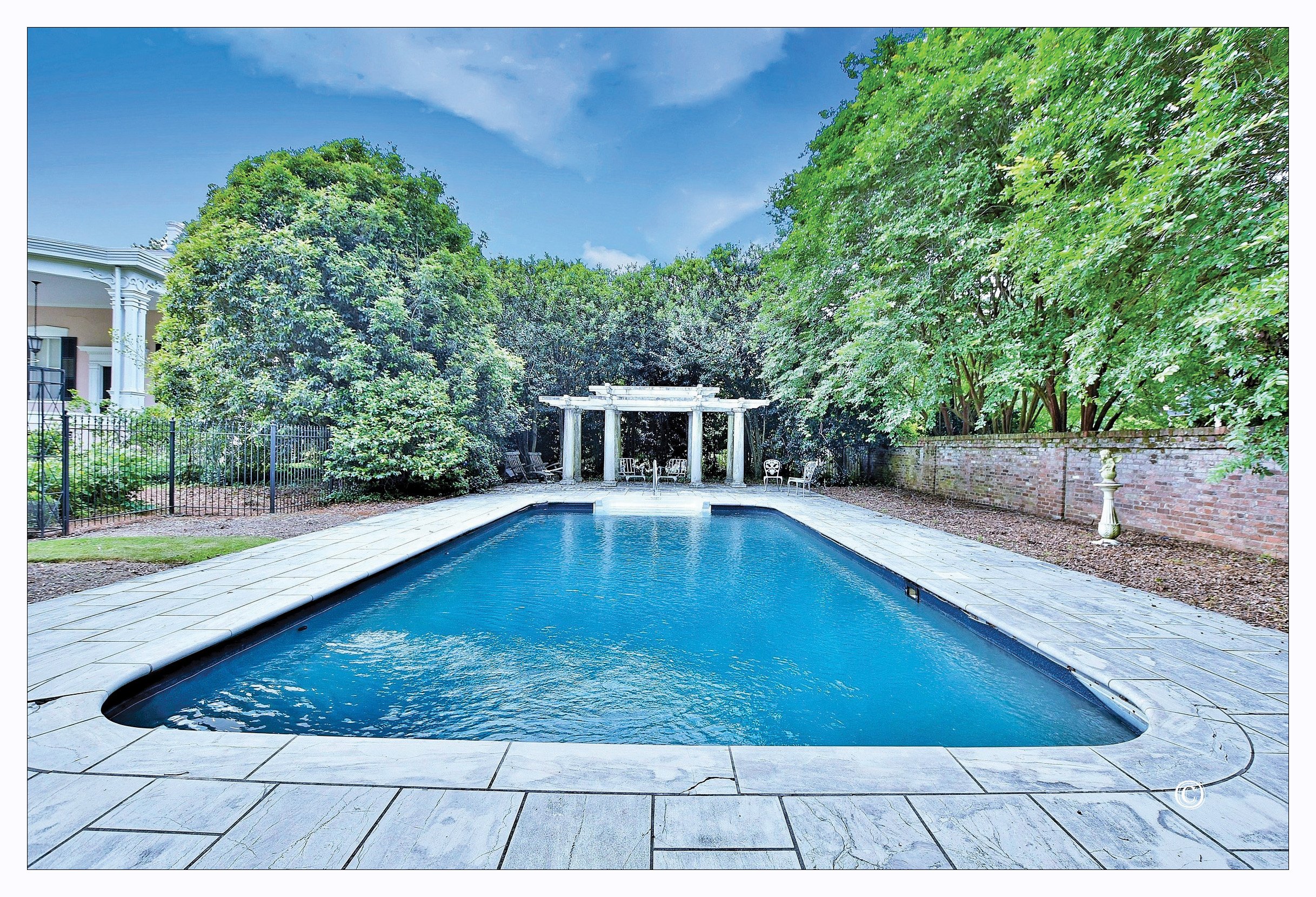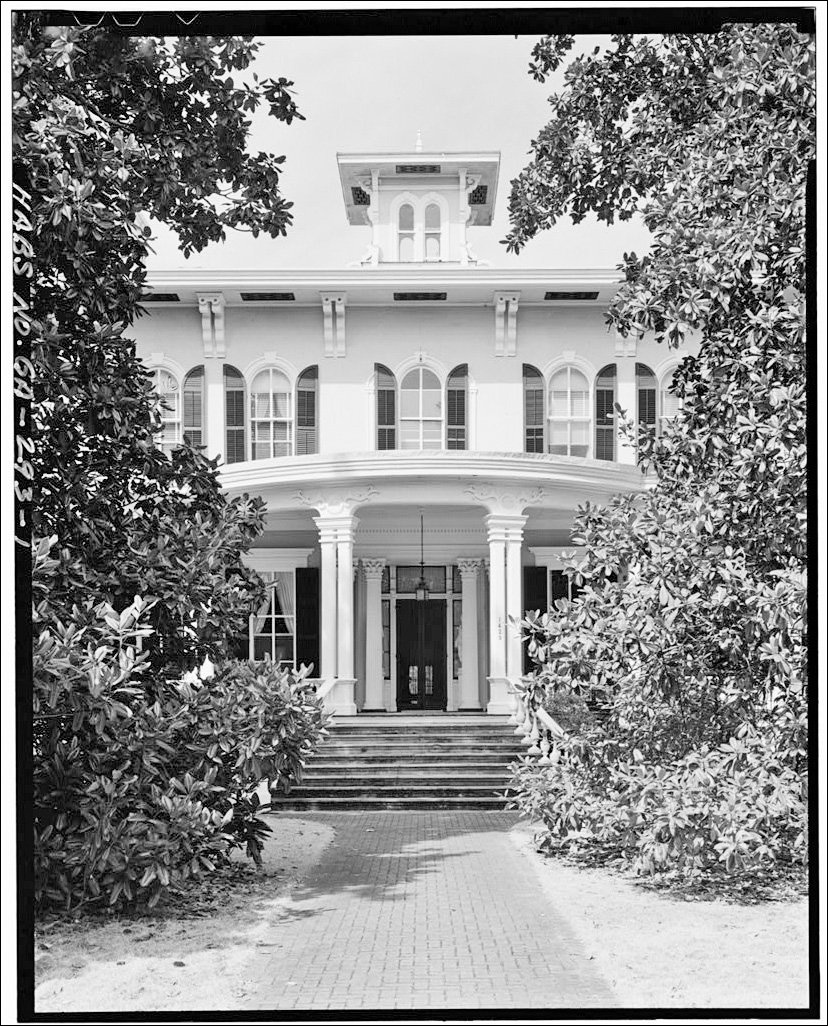HISTORIC DINGLEWOOD
The Dinglewood Historic District is a small residential neighborhood that features the Dinglewood House built in 1859, one of Columbus’ most outstanding homes. The property/estate was 30 acres purchased in 1857 from John Woolfolk, a local farmer and major land holder in what became Wynnton, as well as Fort Benning.
By Kenneth H. Thomas, Jr. - Photos by Doug Roth Photography
Dinglewood, located on Buena Vista Road at Wynnton Road, is one of the finest antebellum homes in Columbus. It was completed in 1859 for Joel Early Hurt (1821-1865) and his wife Frances Flournoy Hurt (1821-1899) and was perhaps the last great house built in Columbus before the Civil War began two years later.
It was designed in the Italianate style making it distinct from the popular Greek Revival homes of the times with their clean lines and stately columns. The Italianate style was more ornate. It cost more than the First Baptist Church, completed around the same time. The Hurts had many family members in the area, he in Russell County, Alabama, where his father had died in 1843 and where his siblings lived, and she Alabama, Columbus, and Eatonton, Georgia, where they were both from and had married in 1841. The current Flournoy families in Columbus descend from her siblings.
The Hurts lived at the house with their only child, Julia (1842-1891), who was 17-18 when they moved in. No young children of any subsequent owner were to grow up in this house until a century later.
The property/estate was 30 acres purchased in 1857 from John Woolfolk, a local farmer and major land holder in what became Wynnton, as well as Fort Benning.
In 1861, Julia Hurt married Captain Peyton Holt Colquitt (1831-1863), of Columbus, who had attended West Point 1849-1850, had been editor of the Columbus Times, and was an attorney, former State Senator, and member of a very prominent family. His father, Walter T. Colquitt, had been a U. S. Congressman and Senator, and his brother, Alfred H. Colquitt (1824-1894), governor of Georgia from 1877-1882 and U. S. Senator (1883-1894), often visited Mrs. Hurt at her home.
Peyton H. Colquitt rose to the rank of Colonel before his death near Ringgold, Georgia, from wounds suffered at the Battle of Chickamauga (near Chattanooga) on September 22, 1863. His body was not returned for burial until 1866 to Linwood Cemetery. His uniform and his sword are now at the Columbus Museum.
Joel Early Hurt was a very wealthy man and the house reflected the latest in design and workmanship he easily afforded in 1858-1859. The 1860 population census indicated he was worth $16,000 in real estate and $91,800 in personal estate. On his Russell County property, some 2,000 acres, he grew cotton and wheat. He died only a month after the end of the Civil War, age 45, on May 19, 1865 of cancer and was buried in Linwood Cemetery. He had lived in his new house barely six years.
After Mr. Hurt’s death, the house was inherited by his wife and daughter. For various reasons, Mrs. Hurt and Julia, age 24, went to Paris in September 1866 returning in 1867, and while there they met other American expatriates. Julia was romanced by Jerome Napoleon Bonaparte (1830- 1893), great nephew of Napoleon and cousin to the then-emperor Napoleon III. From their brief time together has arisen numerous stories about whether they were ever engaged, and so forth. Versions of these stories were repeated in her obituary and in later histories of Columbus. Jewelry exists that is said to have been a gift to Julia from the younger Bonaparte. Circumstances changed and Julia and her mother left Paris and returned to Georgia.
In 1868, Julia remarried in Columbus to Leonidas “Lee” A. Jordan (1828- 1899) of Macon, 14 years her senior, said to be the wealthiest man in Georgia at that time. They had a long marriage but no children and lived in Macon and on his property near Albany, Georgia. On a visit to her mother, Julia died at Dinglewood in December 1891.
During her long widowhood, Mrs. Frances Hurt at some point invited one of her many nieces, Miss Frances Hurt Adams (1854-1940), to live with her at Dinglewood. When Mrs. Hurt died in 1899, although she left no will, Dinglewood, by then 20 acres, eventually went to the niece/companion.
By 1900-1901 Miss Adams was advertising in the Columbus newspaper: “First Class Board, Large, cool rooms, with private baths if desired.” In a circa 1905 brochure, she advertised renting rooms to regular roomers and as well as winter tourists, effectively becoming a boarding house. By 1905 Miss Adams, as sole owner, sold half interest to her friend, Miss Annie G. Hinde (c.1868-1947), an Ohio native and non-relative, whose family moved to Columbus in the 1870s.
The two women lived there together for the next 35 years until Miss Adams’ death in 1940. After the advent of Camp/later Fort Benning (1918), some army officers and their families lived there. The newspapers as early as 1901 contained articles about various northern visitors/tourists who spent winters there.
Starting In 1916 they sold off lots to individuals to form the Dinglewood subdivision, this process continuing for several decades. In 1946, 14.5 acres were sold to the City of Columbus for a city park, including where the Boy Scout hut stands today. Thus at Miss Hinde’s death in 1947, the remaining acreage consisted of 3.95 acres. At her death in 1940, Miss Adams willed her undivided half of the Dinglewood house to her friend Miss Hinde, and upon Miss Hinde’s death in 1947, leaving a will, her family sold the property to A. G. Wells (1890-1959), President of Wells Dairies Cooperative.
In 1950, Mr. Wells sold the property to Lloyd G. Bowers (1912-1994), a cotton farmer, and his wife Effie Siegling, from Charleston, whom he had married in 1946. At this point the house had children who grew up there, as the Bowers eventually had six children. Mr. Bowers died in 1994 and Mrs. Bowers, age 100, in January 2022. The Lloyd Bowers family had long been associated with Dinglewood, with Mr. Bowers’ ancestors serving as pallbearers for both Julia and her mother.
Dinglewood was added to the National Register of Historic Places in 1972 as an individual historic property and was part of the Dinglewood Historic District when it was added to the National Register in 2001. The subdivision included 27 acres from the original Dinglewood estate, including the houses whose lots were sold from the estate, and the city park.
During the Bowers stewardship of Dinglewood the house came alive again not only with a growing family of children, but with social events in various areas especially in music. The house now awaits its new destiny.
Southern Views Magazine- All Rights Reserved ©









